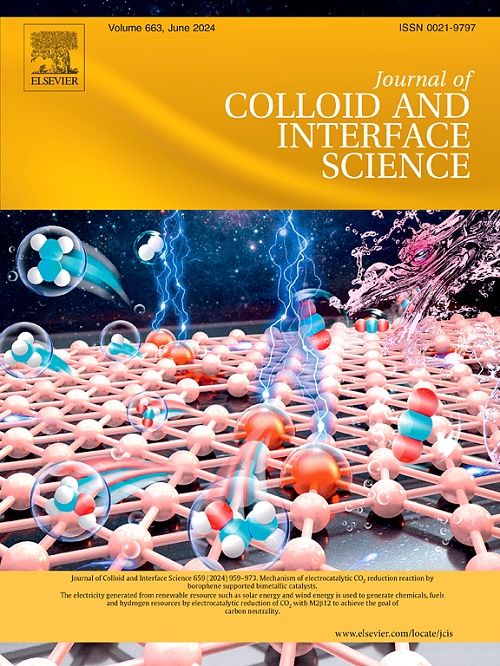Spinning microrods in a rotating electric field with tunable hodograph
IF 9.4
1区 化学
Q1 CHEMISTRY, PHYSICAL
引用次数: 0
Abstract
Hypothesis
In external high-frequency rotational electric fields, the polarization of rod-like colloidal particles experiences a slight temporal delay relative to the field, resulting in a torque that acts upon the particles. This torque depends on the hodograph of the external rotating electric field (the spatial curve traced by the tip of the electric field vector as it changes over time), enabling control over the rotational dynamics of rod-like colloidal particles.
Experiments
The experiments were conducted using synthesized monodisperse silica microrods with average size of dispersed in deionized water, at a mass fraction of 0.2%. The external electric field was generated using an 8-electrode system, and it rotated within the system's plane along an elliptical hodograph at a frequency of 30 kHz. We used an optical microscope with magnification objective of equipped with a CCD-camera (Thorlabs). The experimental data were processed using Fiji software.
Findings
The external high-frequency rotational electric field allows for controlled imposition of three types of rotational dynamics onto rod-like colloidal particles: (i) asynchronous continuous rotation – tunable spinners, (ii) oscillations around a certain direction with sporadic rod flips – rotational jumpers with enhanced directional ordering, and (iii) a regime of “arrested” particle orientation along the principal axes of field anisotropy.

求助全文
约1分钟内获得全文
求助全文
来源期刊
CiteScore
16.10
自引率
7.10%
发文量
2568
审稿时长
2 months
期刊介绍:
The Journal of Colloid and Interface Science publishes original research findings on the fundamental principles of colloid and interface science, as well as innovative applications in various fields. The criteria for publication include impact, quality, novelty, and originality.
Emphasis:
The journal emphasizes fundamental scientific innovation within the following categories:
A.Colloidal Materials and Nanomaterials
B.Soft Colloidal and Self-Assembly Systems
C.Adsorption, Catalysis, and Electrochemistry
D.Interfacial Processes, Capillarity, and Wetting
E.Biomaterials and Nanomedicine
F.Energy Conversion and Storage, and Environmental Technologies

 求助内容:
求助内容: 应助结果提醒方式:
应助结果提醒方式:


